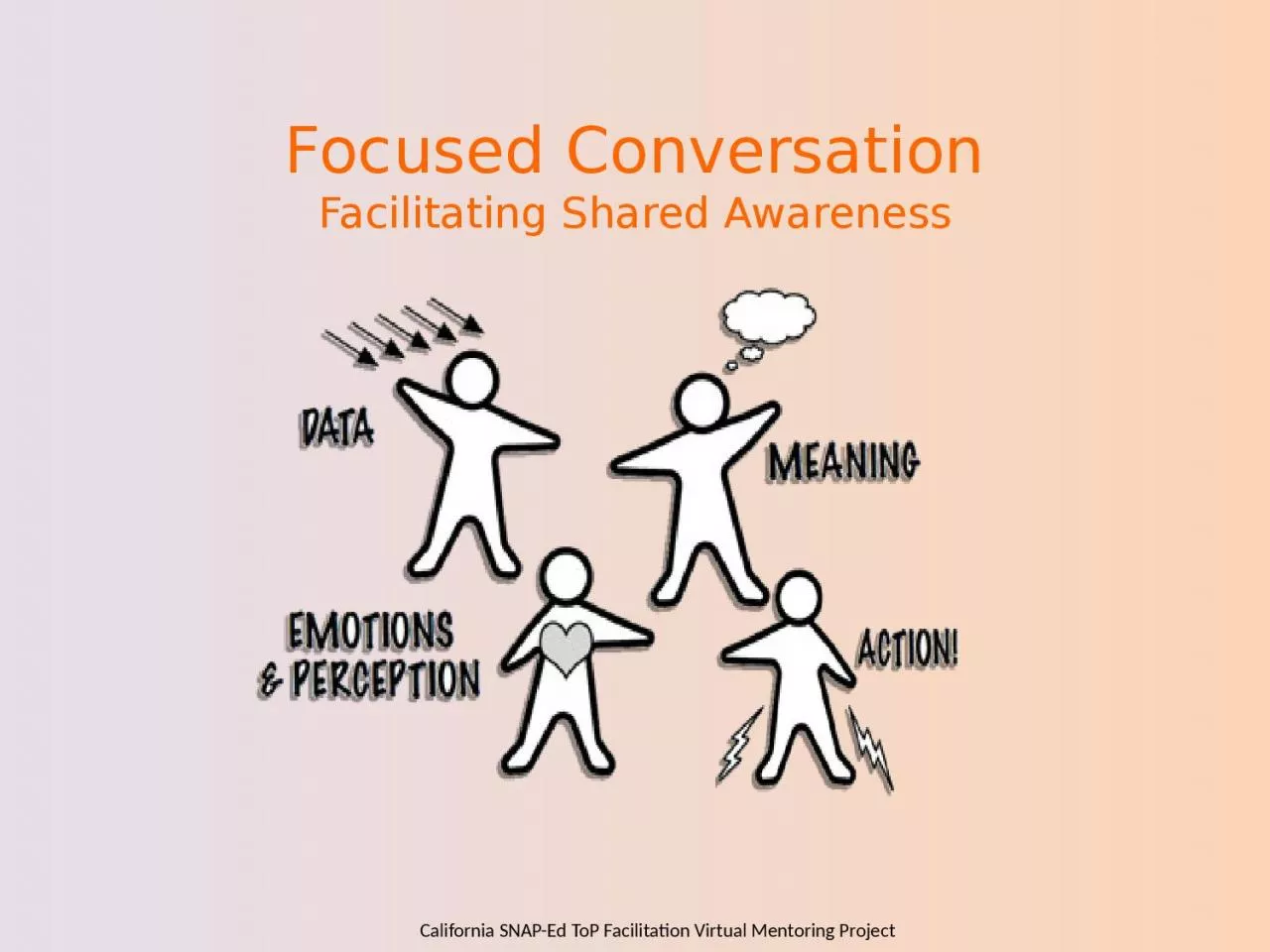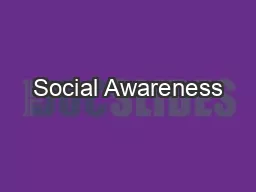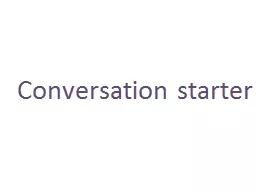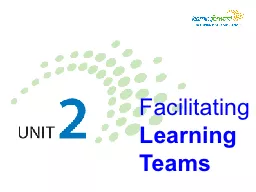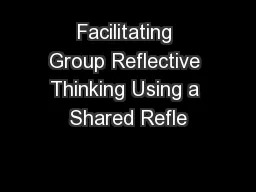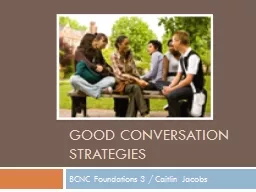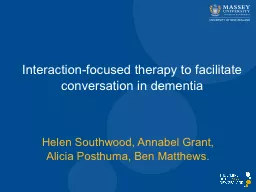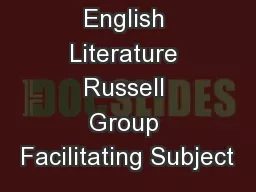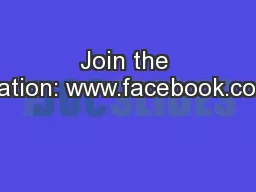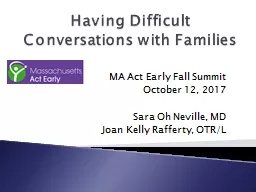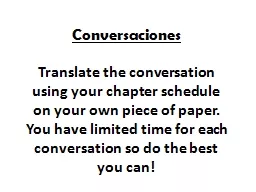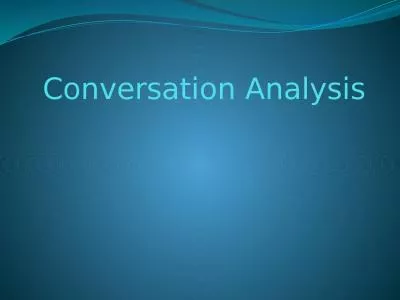PPT-Focused Conversation Facilitating Shared Awareness
Author : wang | Published Date : 2023-06-26
California SNAPEd ToP Facilitation Virtual Mentoring Project Focused Conversation Focused Conversation follows a neurological journey represented by the four
Presentation Embed Code
Download Presentation
Download Presentation The PPT/PDF document "Focused Conversation Facilitating Shared..." is the property of its rightful owner. Permission is granted to download and print the materials on this website for personal, non-commercial use only, and to display it on your personal computer provided you do not modify the materials and that you retain all copyright notices contained in the materials. By downloading content from our website, you accept the terms of this agreement.
Focused Conversation Facilitating Shared Awareness: Transcript
Download Rules Of Document
"Focused Conversation Facilitating Shared Awareness"The content belongs to its owner. You may download and print it for personal use, without modification, and keep all copyright notices. By downloading, you agree to these terms.
Related Documents

